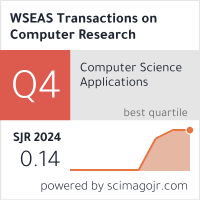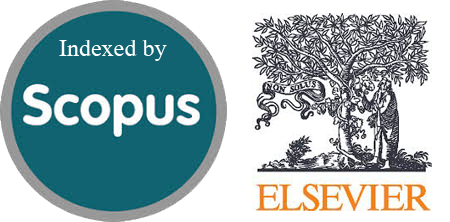Deep Learning-Based Action Recognition Algorithm for Jiangsu Dan Opera Characters
Keywords:
Deep learning, Opera, Dan opera, Action recognition, OpenPose, ST-GCNAbstract
With the rapid development of artificial intelligence technology, deep learning has achieved
remarkable results in fields such as image recognition. This study takes Jiangsu Dan opera, an opera genre with
unique regional cultural characteristics, as the object, and conducts an in-depth analysis of the artistic
characteristics and character movements of Dan opera based on deep learning algorithms to clarify the
importance and difficulties of movement recognition. By collecting a large amount of Dan opera image and
video data, a dataset suitable for Dan opera character action recognition is constructed. Advanced deep learning
models, such as deep learning ST-GCN network and OpenPose, a multi-person pose estimation algorithm, are
used to train and optimize the dataset. The experimental results show that the proposed algorithm has high
accuracy and robustness in Dan opera character movement recognition, can effectively identify different
movement types, and provides a new technical means for the inheritance, protection, and innovative
development of Dan opera.
References
[1]Fan T, Wang H, Hodel T, Multimodal
knowledge graph construction of Chinese
traditional operas and sentiment and genre
recognition, Journal of Cultural Heritage,
Vol.62, 2023, pp. 32-44. DOI:
10.1016/j.culher.2023.05.003.
[2] Tang X, Creation of Drama Art Based on
Deep Learning and Evolution Strategy,
Scientific programming, 2022, Vol. 2022, pp.
6217325.1-6217325.9. DOI:
10.1155/2022/6217325.
[3] Fang M, Peng S, Zhao Y, Yuan H, Hung CC,
Liu S, 3s-STNet: three-stream spatial–
temporal network with appearance and
skeleton information learning for action
recognition, Neural Computing and
Applications, Vol.35, No.2, 2023, pp. 1835-
1848. DOI: 10.1007/s00521-022-07763-8.
[4] Wu Q, Huang Q, Li X. Multimodal human
action recognition based on spatio-temporal
action representation recognition model.
Multimedia Tools & Applications, Vol.82,
No.11, pp. 16409-16430, 2023. DOI:
10.1007/s11042-022-14193-0.
[5] Cheng B, Xiao B, Wang J, Shi H, Huang TS,
Zhang L, Higherhrnet: Scale-aware
representation learning for bottom-up human
pose estimation, Proceedings of the
IEEE/CVF Conference on Computer Vision
and Pattern Recognition, New Orleans, LA,
USA, 2020, pp. 5386-5395. DOI:
10.48550/arXiv.1908.10357.
[6] Wang L, The Application of Dance
Techniques in Dance Performance,
International Journal of Social Science and
Education, Vol. 5, No.12,2022, pp. 153-158.
DOI: 10.6918/IJOSSER.202212_5(12).0025
[7] Chen J, Chen L, Movement Evaluation
Algorithm-Based Form Tracking Technology
and Optimal Control of Limbs for Dancers,
Mathematical Problems in Engineering, Vol.
2022, 2022, pp. 7749324. DOI:
10.1155/2022/7749324.
[8] Richardson E, Alaluf Y, Patashnik O, Nitzan
Y, Azar Y, Shapiro S, Cohen-Or D, Encoding
in style: a stylegan encoder for image toimage translation.Computer Vision and
Pattern Recognition, IEEE, Nashbille, TN,
USA, 2021, pp. 2287-2296. DOI:
10.1109/CVPR46437.2021.00232.
[9] Alsawadi MS, El-Kenawy ESM, Rio M,
Using BlazePose on Spatial Temporal Graph
Convolutional Networks for Action
Recognition, Computers, materials &
continua, Vol. 74, No. 1, 2022, pp. 19-36.
DOI: 10.32604/cmc.2023.032499.
[10] Jiang H, Tsai SB, An Empirical Study on
Sports Combination Training Action
Recognition Based on SMO Algorithm
Optimization Model and Artificial
Intelligence, Mathematical Problems in
Engineering, Vol. 2021, 2021, pp. 1-11. DOI:
10.1155/2021/7217383.
[11] Liu Y, Ma R, Li H, Wang C, Tao Y, RGB-D
Human Action Recognition of Deep Feature
Enhancement and Fusion Using Two-Stream
ConvNet, Journal of Sensors, 2021, Vol.
2021, pp. 8864870. DOI:
10.1155/2021/8864870.
[12] Zahra SB, Khan MA, Abbas S, Khan KM,
Ghamdi MAA, Almotiri SH, Marker-Based
and Marker-Less Motion Capturing Video
Data: Person and Activity Identification
Comparison Based on Machine Learning
Approaches, Computers, Materials &
Continua, Vol.66, No.2, 2023, pp. 1269-1282.
DOI: 10.32604/CMC.2020.012778.
[13] Emanuel AWR, Mudjihartono P, Nugraha
JAM, Snapshot-Based Human Action
Recognition using OpenPose and Deep
Learning, IAENG Internaitonal journal of
computer science, Vol.48, No.4 Pt.1, 2021,
pp. 862-867, [Online].
https://www.zhangqiaokeyan.com/journalforeign-detail/0704060238570.html (Accessed
Date: October 22, 2024).
[14] Kraehea AM. The Future of Art Curriculum:
Imagining and Longing Beyond “the Now.”
Art Education, Vol. 73, No. 3, 2020, pp. 4–5.
Doi: 10.1080/00043125.2020.1738843
Downloads
Published
Issue
Section
License
Copyright (c) 2025 WSEAS Transactions on Computer Research

This work is licensed under a Creative Commons Attribution-NonCommercial-ShareAlike 4.0 International License.
Author(s) and co-author(s) jointly and severally represent and warrant that the Article is original with the author(s) and does not infringe any copyright or violate any other right of any third parties and that the Article has not been published elsewhere. Author(s) agree to the terms that the WSEAS Journal will have the full right to remove the published article on any misconduct found in the published article.




